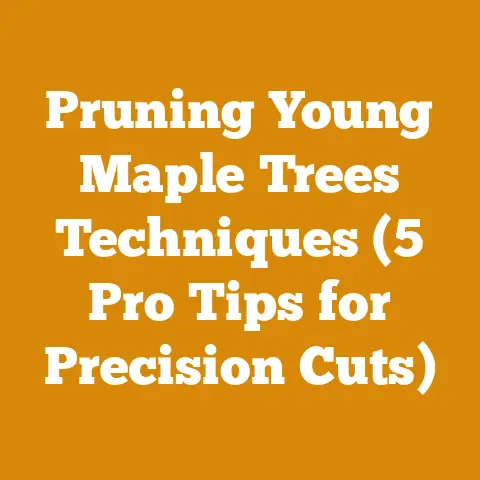Dog Bowl Cover Safety (5 Wood Finishing Tips for Pet Projects)
Durability. A dog bowl cover? It’s not just about aesthetics; it’s about creating something that can withstand the daily wear and tear of a pet’s life. As someone who’s spent years knee-deep in sawdust, transforming raw timber into everything from sturdy furniture to intricate carvings, I’ve learned a thing or two about wood finishing. And believe me, a good finish can make or break your project, particularly when dealing with something that’s likely to encounter slobber, spills, and the occasional playful nibble.
In this article, I’m going to share five essential wood finishing tips specifically tailored for pet projects, focusing on creating a safe, durable, and beautiful dog bowl cover. I’ll be drawing on my own experiences, mistakes (and there have been plenty!), and the wisdom I’ve gleaned from fellow woodworkers over the years. We’ll cover everything from selecting the right type of finish to application techniques that will ensure your project stands the test of time. So, grab your safety glasses, and let’s dive in!
Choosing the Right Finish: Safety First
The most important consideration when finishing anything that will come into contact with animals is safety. Not all wood finishes are created equal, and some contain chemicals that can be harmful if ingested. I remember back in ’98, I used a lacquer on a birdhouse project, not thinking much of it. A few weeks later, the birds were gone. Turns out, the fumes, even after drying, were enough to deter them. That was a harsh lesson, but one I never forgot.
Understanding “Food Safe” vs. “Pet Safe”
The term “food safe” gets thrown around a lot, but it’s crucial to understand what it actually means. According to the FDA, a finish is considered food safe once it has fully cured and is no longer leaching harmful chemicals. However, “pet safe” takes this a step further. Pets are often more susceptible to toxins due to their smaller size and tendency to chew on things.
- Food-Grade Mineral Oil: A classic choice. It’s non-toxic, easy to apply, and enhances the natural beauty of the wood. I often use it as a first coat on cutting boards before applying a beeswax finish.
- Beeswax Polish: Another natural option, often combined with mineral oil. It provides a soft, protective layer and is safe if ingested in small amounts. I make my own blend using beeswax pellets and mineral oil, melted together in a double boiler.
- Shellac: When fully cured, shellac is considered food-safe. However, it’s essential to use a dewaxed shellac for projects that will be exposed to moisture, as the wax can interfere with adhesion of subsequent coats.
- Water-Based Polyurethane: Look for a water-based polyurethane specifically labeled as low-VOC (volatile organic compounds). These finishes are generally considered safe once fully cured, but always check the manufacturer’s specifications. I’ve used General Finishes High Performance Water Based Topcoat with great success on several pet furniture projects.
- Avoid: Oil-based paints, varnishes, lacquers, and stains that are not specifically labeled as food-safe or low-VOC. These finishes often contain solvents and other chemicals that can be harmful to pets.
Case Study: A Dog Bowl Cover Redesign
I once had a client who wanted a beautiful, ornate dog bowl cover made from reclaimed barn wood. Initially, they were leaning towards a high-gloss lacquer finish for its durability. However, after discussing the potential risks to their dog, we opted for a combination of food-grade mineral oil and beeswax polish. The result was a beautiful, rustic finish that was both safe and durable. And, most importantly, the dog was perfectly safe!
Proper Surface Preparation: The Foundation of a Great Finish
No matter how good your finish is, it won’t look its best if the surface isn’t properly prepared. I like to say that surface prep is 80% of the battle. I’ve seen countless projects ruined by skimping on this step.
Sanding: Achieving a Smooth Canvas
Sanding is crucial for creating a smooth, even surface for the finish to adhere to.
- Start with the right grit: Begin with a coarser grit sandpaper (e.g., 80-grit) to remove any imperfections, scratches, or mill marks.
- Progress to finer grits: Gradually work your way up to finer grits (e.g., 120-grit, 180-grit, 220-grit) to refine the surface.
- Sand with the grain: Always sand in the direction of the wood grain to avoid creating unsightly scratches.
- Use a sanding block: A sanding block helps to distribute pressure evenly and prevents you from accidentally rounding over edges.
- Clean the surface thoroughly: After sanding, use a tack cloth or vacuum to remove all sanding dust. Even the smallest particles can interfere with the finish. I often use compressed air to get into hard-to-reach areas.
Filling Imperfections: Addressing Knots and Cracks
Wood is a natural material, and it often contains imperfections such as knots, cracks, and voids. While these imperfections can add character to a project, they can also create problems for the finish.
- Wood filler: Use a wood filler to fill any imperfections. Choose a wood filler that is compatible with your chosen finish.
- Apply the filler: Apply the filler according to the manufacturer’s instructions. Overfill the imperfection slightly, as the filler will shrink as it dries.
- Sand the filler: Once the filler is dry, sand it flush with the surrounding wood surface.
- Consider epoxy resin: For larger cracks or voids, consider using epoxy resin. Epoxy resin is strong, durable, and can be tinted to match the color of the wood. I’ve used epoxy resin to fill large cracks in reclaimed wood, creating stunning visual effects.
Moisture Content: A Critical Factor
The moisture content of the wood is a critical factor in achieving a successful finish. Wood that is too wet or too dry can cause the finish to crack, peel, or blister.
- Use a moisture meter: A moisture meter is an essential tool for any woodworker. Use it to measure the moisture content of the wood before you start finishing.
- Ideal moisture content: The ideal moisture content for wood varies depending on the species and the environment. Generally, a moisture content of 6-8% is ideal for interior projects.
- Acclimatize the wood: Allow the wood to acclimatize to the environment where it will be used for several days before finishing. This will allow the wood to reach its equilibrium moisture content. I once rushed a project and didn’t let the wood acclimate properly. The finish cracked within a few weeks. Lesson learned!
Application Techniques: Achieving a Flawless Finish
Applying the finish correctly is just as important as choosing the right finish and preparing the surface properly. There are several different application methods, each with its own advantages and disadvantages.
Brushing: A Classic Approach
Brushing is a classic application method that is suitable for most types of finishes.
- Choose the right brush: Use a high-quality brush that is designed for the type of finish you are using. For water-based finishes, use a synthetic brush. For oil-based finishes, use a natural bristle brush.
- Load the brush properly: Dip the brush into the finish, but don’t overload it. Tap the brush against the side of the container to remove excess finish.
- Apply the finish in thin coats: Apply the finish in thin, even coats, following the grain of the wood.
- Avoid drips and runs: Check for drips and runs as you are applying the finish. Remove them immediately with a brush or a clean cloth.
- Sand between coats: After each coat of finish has dried, lightly sand the surface with a fine-grit sandpaper (e.g., 320-grit) to remove any imperfections and create a smooth surface for the next coat.
Wiping: A Gentle Touch
Wiping is a great application method for thin finishes like mineral oil and beeswax polish.
- Use a lint-free cloth: Use a lint-free cloth to apply the finish. Microfiber cloths work well.
- Apply the finish liberally: Apply the finish liberally to the surface of the wood.
- Wipe off the excess: After a few minutes, wipe off the excess finish with a clean cloth.
- Buff the surface: After the finish has dried, buff the surface with a clean cloth to create a smooth, lustrous finish.
Spraying: A Professional Finish
Spraying is a great application method for achieving a professional-looking finish. However, it requires specialized equipment and a well-ventilated workspace.
- Use the right equipment: Use a sprayer that is designed for the type of finish you are using.
- Thin the finish: Thin the finish according to the manufacturer’s instructions.
- Apply the finish in thin coats: Apply the finish in thin, even coats, overlapping each pass by about 50%.
- Avoid runs and sags: Check for runs and sags as you are applying the finish. Remove them immediately with a brush or a clean cloth.
- Sand between coats: After each coat of finish has dried, lightly sand the surface with a fine-grit sandpaper (e.g., 320-grit) to remove any imperfections and create a smooth surface for the next coat.
My Personal Experience with Spraying
I remember the first time I tried spraying a finish. I was working on a large dining table, and I wanted to achieve a flawless, factory-like finish. I invested in a high-quality HVLP (High Volume Low Pressure) sprayer and carefully followed the manufacturer’s instructions. However, I made one crucial mistake: I didn’t properly ventilate my workspace. The fumes were overwhelming, and I ended up with a headache that lasted for hours. I also had a lot of overspray, which resulted in a rough, uneven finish. I learned my lesson the hard way: always prioritize safety and ventilation when spraying finishes.
Enhancing Durability: Protecting Your Investment
A dog bowl cover is going to take a beating. Spilled water, food crumbs, and the occasional curious nibble are all part of the package. So, enhancing durability is crucial.
Multiple Coats: Building a Protective Barrier
Applying multiple coats of finish is essential for creating a durable, long-lasting finish. Each coat adds an additional layer of protection against scratches, moisture, and other damage.
- Follow the manufacturer’s instructions: Follow the manufacturer’s instructions regarding the number of coats to apply.
- Sand between coats: Lightly sand the surface between each coat to remove any imperfections and create a smooth surface for the next coat.
- Allow sufficient drying time: Allow each coat of finish to dry completely before applying the next coat.
Choosing a Durable Topcoat: The Final Layer of Defense
Consider using a durable topcoat to provide extra protection against scratches, moisture, and other damage.
- Polyurethane: Polyurethane is a durable, water-resistant finish that is ideal for projects that will be exposed to heavy use. Choose a water-based polyurethane for a low-VOC option.
- Epoxy resin: Epoxy resin is an extremely durable finish that is resistant to scratches, chemicals, and moisture. It is a good choice for projects that will be exposed to harsh conditions.
- Spar varnish: Spar varnish is a flexible, water-resistant finish that is designed for use on boats. It is a good choice for projects that will be exposed to the elements.
Adding a Protective Edge: Metal or Rubber
Consider adding a protective edge to the dog bowl cover to prevent damage from the bowls themselves.
- Metal edging: Metal edging can be attached to the edges of the cover to protect them from scratches and dents.
- Rubber edging: Rubber edging can be used to create a soft, cushioned edge that will protect the bowls and the cover from damage.
Personal Story: The Indestructible Dog Bed
I once built a dog bed for my own Labrador, Buster. I used reclaimed oak for the frame and finished it with several coats of marine-grade spar varnish. I also added metal edging to protect the edges from Buster’s enthusiastic chewing. That dog bed lasted for over 10 years, surviving countless naps, chew sessions, and even a few accidental spills. It was a testament to the power of choosing the right materials and applying a durable finish.
Maintenance and Care: Extending the Life of Your Project
Even the most durable finish will eventually require some maintenance and care. Regular cleaning and occasional refinishing will help to extend the life of your dog bowl cover and keep it looking its best.
Regular Cleaning: Keeping it Fresh
Regular cleaning is essential for keeping your dog bowl cover looking its best.
- Wipe up spills immediately: Wipe up any spills immediately with a damp cloth.
- Use a mild cleaner: Use a mild cleaner to remove dirt and grime. Avoid harsh chemicals or abrasive cleaners, as they can damage the finish.
- Dry the surface thoroughly: After cleaning, dry the surface thoroughly with a clean cloth.
Refinishing: Restoring the Shine
Over time, the finish on your dog bowl cover may become scratched, faded, or worn. Refinishing can restore the shine and protect the wood from further damage.
- Sand the surface lightly: Lightly sand the surface with a fine-grit sandpaper (e.g., 320-grit) to remove any loose finish and create a smooth surface for the new finish.
- Apply a new coat of finish: Apply a new coat of finish according to the manufacturer’s instructions.
- Consider a maintenance coat: For finishes like mineral oil and beeswax polish, applying a maintenance coat every few months will help to keep the finish looking its best.
Addressing Scratches: A Quick Fix
Minor scratches can often be repaired with a simple touch-up.
- Use a touch-up marker: Use a touch-up marker that matches the color of the finish to conceal the scratch.
- Apply a small amount of finish: Apply a small amount of finish to the scratch with a fine-tipped brush or a cotton swab.
- Buff the surface: After the finish has dried, buff the surface with a clean cloth to blend the repair with the surrounding finish.
A Funny Story about Maintenance
I once had a client who called me in a panic because their dog had chewed a large chunk out of their custom-made dog bowl cover. They were convinced that the entire cover was ruined. I went over to their house and assessed the damage. To my surprise, the damage was mostly cosmetic. I was able to repair the chewed area with some wood filler and a touch-up marker. The client was amazed at how easily I was able to fix the damage. It just goes to show that even the most severe damage can often be repaired with a little bit of know-how and the right tools.
Sustainability Considerations: Choosing Eco-Friendly Options
As woodworkers, we have a responsibility to use sustainable materials and practices. When choosing wood and finishes for your dog bowl cover, consider the environmental impact of your choices.
Sourcing Sustainable Timber: Responsible Forestry
Choose wood that is sourced from sustainably managed forests. Look for wood that is certified by the Forest Stewardship Council (FSC).
- FSC certification: FSC certification ensures that the wood comes from forests that are managed in an environmentally responsible and socially beneficial manner.
- Reclaimed wood: Reclaimed wood is a great option for sustainable woodworking. It reduces the demand for new wood and gives a second life to wood that would otherwise be discarded.
- Locally sourced wood: Choose wood that is sourced locally to reduce transportation costs and emissions.
Choosing Eco-Friendly Finishes: Reducing Your Carbon Footprint
Choose finishes that are low-VOC and made from sustainable materials.
- Water-based finishes: Water-based finishes are generally lower in VOCs than oil-based finishes.
- Natural finishes: Natural finishes like mineral oil, beeswax polish, and shellac are made from renewable resources and are generally considered to be more environmentally friendly than synthetic finishes.
- Look for certifications: Look for finishes that are certified by organizations like Green Seal or EcoLogo.
Minimizing Waste: Efficient Use of Materials
Minimize waste by carefully planning your project and using efficient cutting techniques.
- Plan your cuts carefully: Plan your cuts carefully to minimize waste. Use a cutting diagram to optimize the use of your materials.
- Use scrap wood: Use scrap wood for smaller projects or to practice your finishing techniques.
- Recycle wood scraps: Recycle wood scraps whenever possible.
A Personal Commitment to Sustainability
I’ve made a conscious effort to incorporate sustainable practices into my woodworking business. I source my wood from local, FSC-certified suppliers whenever possible. I also use reclaimed wood for many of my projects. I’ve even started experimenting with using plant-based finishes, like linseed oil and tung oil. It’s not always easy, but I believe that it’s important to do our part to protect the environment. According to a 2020 report by the World Wildlife Fund, deforestation is responsible for approximately 15% of global greenhouse gas emissions. By choosing sustainable wood and finishes, we can help to reduce our impact on the environment and protect our forests for future generations.
Troubleshooting Common Problems: Addressing Challenges
Even with the best planning and preparation, you may encounter problems during the finishing process. Here are some common problems and how to address them.
Bubbles: Eliminating Air Pockets
Bubbles can occur when applying finish, especially with brushing or spraying.
- Use a slow-drying finish: Slow-drying finishes allow more time for bubbles to escape.
- Apply thin coats: Applying thin coats of finish reduces the likelihood of bubbles forming.
- Use a brush designed for the finish: Some brushes are designed to reduce bubbling.
- Pop the bubbles: If bubbles appear, you can try popping them with a clean brush or a pin.
Runs and Sags: Preventing Uneven Application
Runs and sags occur when too much finish is applied to a vertical surface.
- Apply thin coats: Applying thin coats of finish reduces the likelihood of runs and sags.
- Wipe off excess finish: If you see runs or sags forming, wipe off the excess finish with a clean brush or a cloth.
- Sand the surface: If the finish has already dried with runs or sags, sand the surface smooth and apply another coat of finish.
Orange Peel: Achieving a Smooth Texture
Orange peel is a textured surface that resembles the skin of an orange. It is often caused by improper spraying techniques or using a finish that is too thick.
- Thin the finish: Thin the finish according to the manufacturer’s instructions.
- Adjust the sprayer settings: Adjust the sprayer settings to achieve a fine, even spray pattern.
- Sand the surface: If the finish has already dried with orange peel, sand the surface smooth and apply another coat of finish.
Fish Eye: Addressing Contamination
Fish eye is a defect in the finish that appears as small, circular depressions. It is often caused by contamination on the surface of the wood.
- Clean the surface thoroughly: Clean the surface thoroughly with a degreaser or a wax remover to remove any contamination.
- Use a fish eye eliminator: Add a fish eye eliminator to the finish according to the manufacturer’s instructions.
- Sand the surface: If the finish has already dried with fish eye, sand the surface smooth and apply another coat of finish.
My Most Memorable Troubleshooting Experience
I once had a project where I was trying to apply a water-based finish to a piece of oily exotic wood. No matter what I did, the finish would fish eye. I tried everything: degreasing the wood, using a fish eye eliminator, even trying a different type of finish. Nothing seemed to work. Finally, I consulted with a chemist friend who specialized in wood finishes. He suggested that I try applying a thin coat of shellac as a barrier coat. To my surprise, it worked perfectly. The shellac sealed the wood and prevented the oil from contaminating the finish. I learned a valuable lesson that day: sometimes, you need to think outside the box to solve a problem.
Conclusion: Crafting Safe and Beautiful Pet Projects
As a seasoned woodworker, I can attest that the journey of crafting is just as rewarding as the finished product. Each project presents an opportunity to learn, grow, and hone your skills. Don’t be afraid to experiment, make mistakes, and learn from them. The most important thing is to enjoy the process and create something that you are proud of.
Key Takeaways:
- Prioritize Safety: Always choose finishes that are safe for pets.
- Surface Preparation is Key: Properly prepare the surface for a flawless finish.
- Durability Matters: Enhance durability with multiple coats and a durable topcoat.
- Maintenance is Essential: Regular cleaning and maintenance will extend the life of your project.
- Sustainability is Important: Choose sustainable materials and practices.
Next Steps:
- Research Finishes: Research different types of pet-safe wood finishes to find the best option for your project.
- Practice Techniques: Practice your finishing techniques on scrap wood before applying them to your finished project.
- Start Small: Start with a simple dog bowl cover design and gradually increase the complexity as you gain experience.
- Share Your Creations: Share your finished projects with other woodworkers and pet lovers.
Happy woodworking, and may your pet projects be both beautiful and safe!






